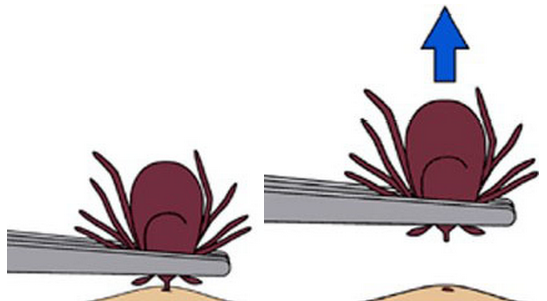Tick Month in Canada
The Canadian Veterinary Medical Association led the first inaugural campaign last year declaring March to be Tick Awareness Month across Canada. In partnership with Merck Animal Health, the campaign wishes to spread light on the danger of tick behavior and the importance of enforcing tick control to keep pets safe through Canada.
In most parts of Canada, tick activity begins when the snow starts to melt and the weather warms up. As pet owners spend more time outdoors with their pets, they need to be aware of ticks and take caution.
Some ticks do carry tick-borne illnesses including Lyme Disease and Rocky Mountain Spotted Fever. If dogs, once active, are now lethargic after outdoor activity, they may have been bitten by a tick. Symptoms of tick diseases may not occur for several weeks or months; and in humans, are often mistaken for the flu. For these reasons, it's important that pet owners perform thorough tick checks on their pets after extended time outside in the backyard, on the trail or at the dog park.
If your dog is doing the following, be on the look-out for tick bites:
- Vomiting
- Regurgitation
- Unsteadiness
- High blood pressure
- Fast heart rate and rhythm (tachyarrhythmias)
- Weakness, especially in the hind limbs
- Partial loss of muscle movements (paresis)
- Complete loss of muscle movement (paralysis), commonly seen in advanced disease state
- Poor reflexes to complete loss of reflex
- Low muscle tone (hypotonia)
- Difficulty in eating
- Disorder of voice (dysphonia)
- Asphyxia due to respiratory muscle paralysis in severely affected animals
- Excessive drooling (sialosis)
- Megaesophagus (enlarged esophagus)
- Excessive dilatation of pupil in the eye (mydriasis)
If your pet encounters a tick bite, remove the tick by performing the following steps:
Step 1: Purchase a Tick Removal Tool
Household tweezers may not be strong enough to successfully remove the tick. We suggest purchasing a tick remover tool from EasyPetFence.com for easy handling. Tick tweezers allow the user to gently remove the tick from the infected area with ease. With a tick tool, users will have peace of mind knowing that all parts of the tick are successfully removed from the skin.
2) Disinfect the tick-biting area with rubbing alcohol or soap and water.
3) Pull the tick straight up. Be sure that the head and body both comes out completely. (Remember: Tick-borne disease transmission is not possible without the tick's head as this is what is burrowed inside the skin.) Do not rush the process so the tick's body does not break apart. If it does break for any reason, remove the broken parts from the infected area - do not leave the remaining body parts attached to your skin.

4) Disinfect the tick-biting area with rubbing alcohol one final time.
5) Place the tick in a sealed container. Store in refrigerator if it is alive, and the freezer if it is dead.
6) Take the tick to a doctor's office quickly for testing to identify the type of tick; and consider testing for Lyme Disease and other diseases.
To safeguard pets this Tick Awareness Month, EasyPetFence encourages homeowners to install a dog fence around properties to keep out wildlife that may be carrying ticks.
